By Lori Samuelson
Years ago, as a beginner genealogist, I held many misplaced beliefs that wasted my time and valuable resources. Looking back, I wish I had known that these ideas were hindering my career as a family historian. Here are four genealogy mistakes that have limited my research over the years. Avoid them if you can.
Genealogy Mistake #1: Only filling in names and dates
Genealogy is not simply completing a form. Be it an electronic family tree or a paper pedigree chart, I wrongly believed that solely recording vital statistics was the goal. Yes, dates are important, but genealogy is much more than form filling.
After receiving a fill in the blank family history book from my mother-in-law as a new bride, I turned to my husband’s eldest aunt and uncle, Ruby and Carl, for the needed information. Name, birth, marriage, death and repeat was good enough for me; my limited view of genealogy was to merely trace the lines of ascent as far as Aunt Ruby’s memory could go.
It never occurred to me that the information I gained might be wrong and that I should have verified the oral source. I also was so focused on the distant past that I neglected to ask those present about their own history. Years after Uncle Carl’s and Aunt Ruby’s death, I discovered this unsourced newspaper clipping on Ancestry.com:
How I wish I had asked Uncle Carl about his life in Oklahoma where his father, Fabian, had moved for a fresh start after the death of his wife, Lucy. This newspaper clipping provides clues to the widower’s hardships, but it would have been more valuable to have gained a personal perspective from one of the article’s unnamed children, Uncle Carl.
Here’s what I learned from abandoning the “Just Fill It In” mindset:
- Always seek out vital records to verify an oral history.
- Record the stories of those alive, including yourself, as today will be history tomorrow.
- Try to fill in the trials and tribulations that ancestors endured by looking for records that provide more than just names and dates.
- Newspaper articles, historical texts, diaries, and letters are wonderful sources to gain insight into your ancestor’s life.
Genealogy Mistake #2: Only asking family history questions to the people I knew personally
Since dead men don’t tell any tales, I knew to contact the living for the information I sought. The problem was this: I was only contacting individuals that I knew personally. Elizabeth Shown Mills has written extensively about the value of using something called the “FAN Club,” that means researching the Friends, Associates, and Neighbors (FANs) of your ancestor.
It is startling to think that information about you is being held in a stranger’s home. Don’t believe me? About two years ago, my mother’s closest friend, Helen, passed away. She had moved to live near family members about 20 years ago. I had also relocated from the area and, other than exchanging Christmas cards, we had no contact.
After her death, Helen’s son was going through her belongings and discovered my address and a newspaper clipping of my wedding announcement. He mailed the announcement to me with a note asking how I knew his mom. I replied that as a close friend of my mother, she had attended my wedding and I still cherish her wedding gift, a crystal candy dish.
Later, he called to say he was sorry but he had thrown out all the letters that my mom had written to his mother over the years, as he had not put together my married name with my maiden name. I would have loved to have read those letters in my mother’s handwriting, keeping Helen up-to-date on our lives. Sadly, that’s no longer an option.
The FAN Club is important but so is reconnecting with distant kin who just might hold the clue you’ve long sought. One of my husband’s second cousins asked for my help in tracing a line to a Revolutionary War soldier, as her mother’s dream was to become a Daughter of the American Revolution before she died. I agreed to help; thankfully, by then I had learned the importance of seeking out living collateral lines.
Here’s an example.
Drusilla Williams DeWolf Thompson lived and died in the 1800s, hence, no birth and death certificate is available. Her children were all born before birth certificates were required and no baptism certificates for them were located. Trying to link her daughter, Mary Thompson Cook, to Drusilla was problematic as Mary, who was buried in Indiana, had died out of state and her whereabouts at the time of her death were unknown to us. The cemetery did not have a copy of Mary’s death certificate and no obituary was found. The funeral home was no longer in operation and the local historical society and library did not know what had become of the records.
What was there to do? Well, we decided to locate every living descendant of Mary, hoping to find someone who knew where she had died so we could obtain a death certificate that would link Mary to Drusilla.
Mary and her husband, Andrew Cook, had 7 children; 3 had died young. By tracing Mary’s 14 grandchildren, and 33 great-grandchildren, we discovered what we were looking for and so much more! Turns out, Drusilla had recorded her husband, herself and all her children’s births in her Bible, which was discovered in an attic in southern Ohio, where she never visited:
Drusilla was born in New York, moved to Chicago after her marriage and resided there until her death. Also in the attic was found the only known picture of Drusilla and Thomas:
Left to right is young Mary, Thomas, Drusilla, James and Lewis Thompson in Graceland Cemetery, Chicago, Cook County, Illinois. The tombstone birth inscription matches the date Drusilla had recorded for herself and Thomas in her Bible. Finding the Bible was wonderful; discovering the picture was priceless.
By seeking out those I didn’t personally know, such as FANs and distant relatives, I’ve discovered this
- Overzealous family and friends are today’s version of a burned courthouse. Look for them far and wide before they pitch that raggedy Bible, faded scrapbook and unidentified photo. Their trash is your treasure.
- Tracing collateral lines can help you make discoveries that you’d otherwise miss.
- Don’t be surprised to find what you need in a place you’d never expect it. People and their belongings move a lot!
Genealogy Mistake #3: NOT organizing research, files and photos
I have a cousin who is a packrat. Family members (knowing he threw nothing out and was interested in genealogy) sent him everything they didn’t know what to do with. Filling his basement, he rented a storage unit to hold his growing collection. Several years ago, I wrote to him to see if he had a photo of a great great grandfather. He thought he did.
The problem was (and is!) that he can’t locate it. Organization is the key to genealogical success. My frustration with my cousin’s inability to locate the photo led me early on to develop an organizational system that works for me:
- My research log, maintained on my computer, helps keep me on track with the various lines I’m researching so I can quickly pick up where I left off.
- Digitization allows for finding and sharing needed documents quickly. I have scanned every photo, vital record, letter, and diary and saved them to my hard drive, CDs, and the cloud. I back up to a portable hard drive and as technology changes, I upgrade. The 8 mm movies went to VCR tapes and then to DVDs. Any far-flung family member who was interested was given a copy, so if my numerous systems are destroyed, I can obtain a replacement.
- A self-created database of helpful resources and tips enables me to locate information easily when the need arises. Here’s what I have for the Alsace Lorraine region; it’s an area I don’t research in often but when I need to revisit it, I can check out the sources I’ve found helpful in the past:
Genealogy Mistake #4: Not seeking the help of experts when I needed it
As a hobbyist, it never occurred to me to reach out to professionals for advice. My thinking was if a family member didn’t know then no one would.
Along the way I’ve discovered that archivists, librarians, and historians can provide needed insight into your family’s life experiences. Several times a week I send a query through Ask a Librarian or Contact Us. While writing this, I discovered that I didn’t have a citation for the Fabian Sederberg clipping. After striking out with the original online poster, I contacted the genealogy department at a county library for help. Although they couldn’t locate the article in the two newspapers they have on microfilm, they referred me to the local museum; that archivist directed me to the state library. I also posted a request on a site for professional genealogists asking for recommendations. I received four tips and discovered that the reason Fabian may have returned to Indiana wasn’t solely due to the climate and his children’s health:
Further research revealed that Ms. Perry was suing Fabian for $1440.00 for unlawfully withholding possession of real estate. Do you know what I learned? In genealogy, two (or more) heads are better than one – and they don’t need to be kin to be helpful. Reach out to those in the know to gain a more thorough understanding of the past.
It is often said that a little knowledge goes a long way. Hopefully, my lessons learned will inspire you to grow as you move forward with your ancestor hunting.
You might also like:
5 Uncommon Places to Find Your Ancestors’ Missing Parents
This May Be the Most Important Genealogy Research Trick You’ll Ever Learn
Lori Samuelson is a lifelong educator and National Board Certified Teacher/Counselor who has conducted personal genealogical research for more than 30 years. For the past 15 years, she has assisted candidates in proving lineal descent for membership with the Daughters of the American Revolution and the Society for Descendants of Lady Godiva. Her bi-weekly blog, Genealogy At Heart, provides research tips, new historical findings for the beginner to the professional level genealogist and her journey to become a Certified Genealogist. Lori is a member of the Association of Professional Genealogists, National Genealogical Society, New England Historic Genealogical Society, Florida State Genealogical Society and the Pinellas Genealogy Society.
Citations:
[1] Unsourced newspaper clipping posted by MLeePierson, 25 Oct 2014; Ancestry: accessed 13 October 2017). Poster does not remember where she obtained the clipping or who dated it. The [Porter County, Indiana] Evening Messenger, [Porter County, Indiana] Daily Vidette, Chesterton [Indiana] Tribune and [Stigler, Oklahoma] State Sentinel did not contain the article. A review of the Porter County [Indiana] Vidette for 1914 could not be made as that year’s microfilm has not been located. Special thanks to genealogist Luin Leisher and the Indiana State Library and Porter County Public Library staff for their assistance.
[2] Drusilla Williams DeWolf Thompson Family Bible Records, Births 1810-1861, for birthdate of Thomas Coke Thompson, 22 February 1810, Drusilla Thompson ,14 May 1832, John Calvin DeWolf, 2 March 1851, Lewis Warren Thompson, 4 May 1858, James Thompson, 9 March 1860 and Mary Thompson, 9 September 1861; digital image supplied by Lori Samuelson [address private], Tarpon Springs, Florida, 2017. Bible was found in the attic of Anna Honaker Schmidt, Xenia, Ohio in March 2001.
[3] Anna Honaker Schmidt (1912-2003) Williams Family Collection photograph, ca. 1868; digital image ca 2008; privately held by Lori Samuelson, Tarpon Springs, Florida, 2017.
[4] State Sentinel [Stigler, Oklahoma], Vol. 8, No. 6, Ed. 1, 17 April 1913, “Notice for Publication,” p. 2, col. 4; digital image, Oklahoma Historical Society: accessed 21 Oct 2017).
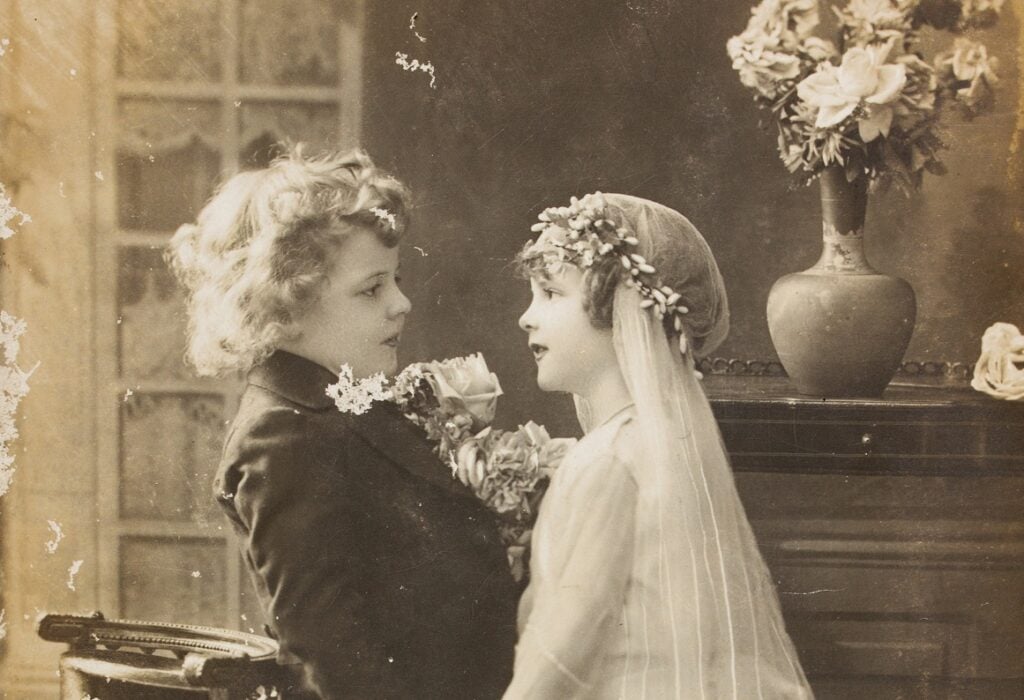
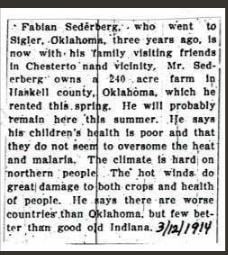

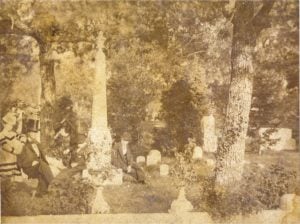
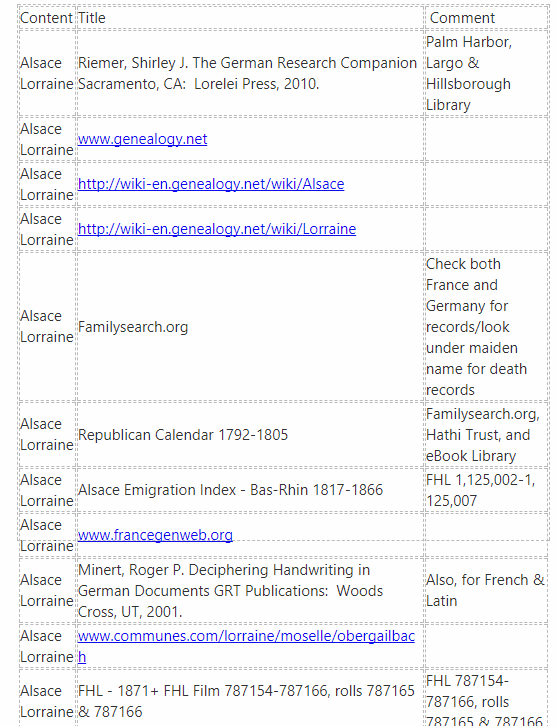
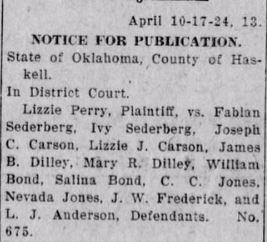
An extremely helpful article written in plain language easily understood. I find myself, now, checking sources uncovered rather than believing that they are gospel. Gained alot of places to research missing persons, places and things taht my ancestors had done or been to. Thank You so much, happy researching.
This is off topic as regards the above messages, however, may be of interest to others.
‘A Fraser Family Saga – Scotland to America’ is a 3 volume, 1,400 page history/genealogy of our family. Researched, compiled and written over a 35 – 40 year span.
We have over 325 family documents and letters written between 1802-1919. Well over 300 were written to, and saved at our Livingston County, NY State homestead – settled circa 1806 by my gr gr gr grandparents (1.9)Alexander & Sarah (Ferguson) Fraser.
We have traced 8 of (1)John & Mary Fraser’s 10 children out of the Muirtown area (west side of the Town of Inverness) in Scotland to the three main areas they settled in, in America – St. John’s Parish(Liberty County, Georgia – Pictou County, Nova Scotia – Livingston(Genesee) County, NY State.
In 1831, my gr gr grandfather ((1.9.8)Donald Fraser came up into Williams Township, Upper Canada (Ontario).
Volume III contains dozens of partial and detailed family genealogies circa the early 1700’s with many carried into the 2000’s. Most are Fraser families, however, there are several others, namely: McGregors, McIntosh, McBain, McPherson, etc.
One mistake I have made is to accept instant discoveries from sites like Myheritage without checking their accuracy. I use Myheritage and I like it, but blindly accepting instant discoveries added a lot of errors to my tree which took me a long time to eliminate. That is because those instant discoveries come from other people’s trees and most people’s trees contain errors, some of which are very obvious. There are even errors on official documents, particularly death certificates, because the person that knows the facts is dead.
Excellent article. This so describes the way I started genealogy. Great aunts and uncles proudly gave me their stuff. I connected it all and thought I had an awesome tree. Now after years to trying to break through the brick walls, I realize a lot of the answers I’m seeking are often lost in what I thought was trivia (I’ve had the answer all along) or impossible to find because there is a mistake somewhere in the less-documented part of my tree. So, the only solution is to go back to the beginning and find the mistakes. Once you have the right information for the grandchildren, it’s easier to find the grandparents.